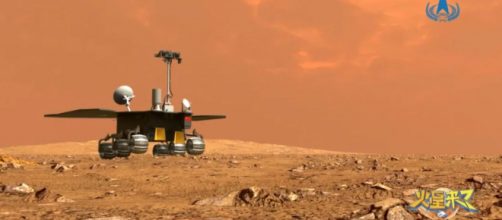China is on Mars, and its Zhurong rover is working on a plan. The Tianwen-1 spacecraft dropped it in the area identified as Utopia Planitia, and the rover has been on the planet's surface since May. It has been gathering a wide range of data and passing them on to scientists on the ground as programmed.
The scientific teams are scattered across the Chinese mainland, Hong Kong and Macau and are processing them. The data provides insights into various parameters associated with the climate, geology and history of the northern hemisphere of Mars. A combination of Artificial Intelligence, robotics and renewable energy has made this possible.
These are vital when undertaking precision work in remote locations millions of miles away.
The ground control has been receiving the data from Zhurong since September. They have released information collected from a range of onboard instruments between February and June. It seems the data could represent flow of water. The scientists would try to ferret out evidence of water or ice below the surface. China's rover Zhurong is on Mars and joins American rovers Curiosity and Perseverance. All of them want to learn more about the red planet.
The Chinese rover will search for lifeforms on Mars
It is a common objective of all those interested in Mars to search for lifeforms on the planet. So far, America and China have arrived.
The Perseverance rover of NASA has begun to collect rock samples from Mars. A planetary scientist at the Hong Kong Polytechnic University is analyzing the data received so far.
This could be "of great scientific interest" because it might provide evidence of an ancient ocean. Nature goes on to add that the initial duration of the rover's mission was of about three months. However, it has gone beyond expectations and has already visited features of interest.
Zhurong will now continue to explore Mars
NASA has more than one Mars rover engaged in specific activities. Curiosity has been there since 2012, and Perseverance joined in February 2021. There is also a helicopter on Mars. Obviously, America is way ahead of others.
Now, China's Zhurong is on the scene. It will continue to explore Mars for years.
Spacecraft Tianwen-1 has now readjusted its orbit to conduct its own observations of Mars. The Chinese space agency CNSA is in dialogue with the European Space Agency ESA to transfer Zhurong's data to Earth. It would pave the way for an international collaboration with China. In July, NASA's Ingenuity helicopter completed its 10th flight on Mars.
Mars Express orbiter of the ESA confirms contact with Zhurong
The European Space Agency ESA confirmed that the Mars Express orbiter had contacted China's Zhurong rover. It was a successful experiment, and it proved that it was feasible to relay data from the Chinese rover to Earth via Mars Express.
The experiments began in November and have now concluded. China was the first to confirm it, and ESA followed. It was a complicated route from Zhurng to Mars Express to the European Space Operations Centre ESOC in Darmstadt and finally to Zhurong's controllers. They confirmed that everything had gone according to plan. A systems engineer of ESOC says: "We're looking forward to carrying out more tests in the future." The intention is to fine-tune the process of communicating between space missions. The Chinese rover depended on the Tianwen-1 orbiter to communicate with the Earth. There is another method, and an additional communication system is always handy. At present, It is a one-way method but valuable in emergencies.


